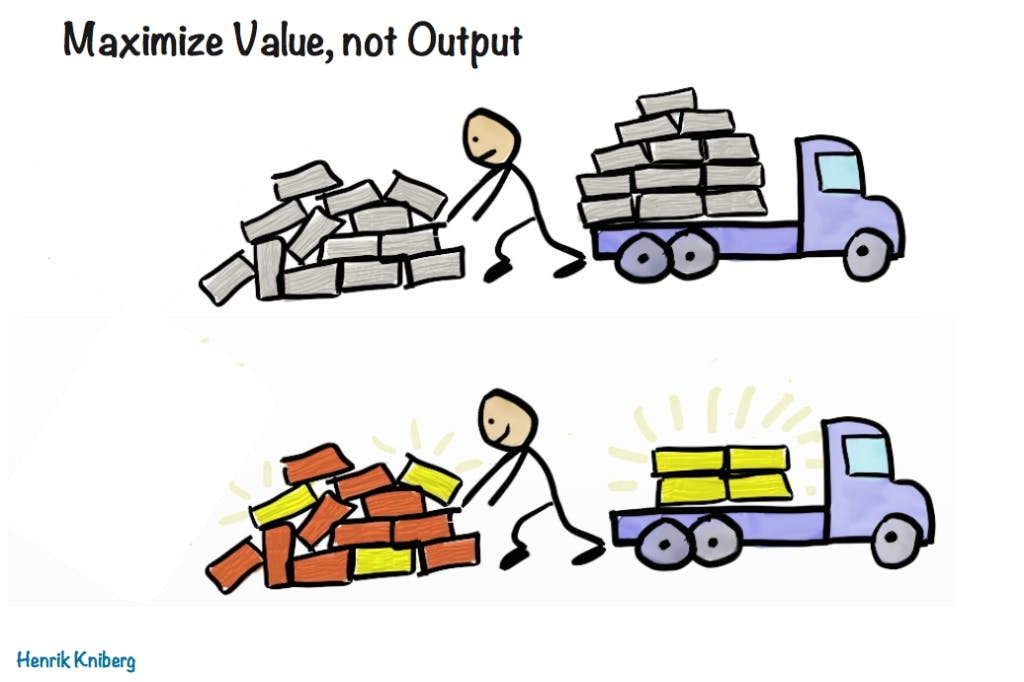How to validate your marketplace idea before building the platform
Don’t build a desert platform. Here are the steps to take to prevalidate your marketplace idea.
Published on
Last updated on

In this chapter of our How to create a marketplace guide, we'll look at ways to validate your idea and business model before actually building the marketplace platform. Also available in audio!
Recognizing a good marketplace idea or a viable business model is difficult.
If you are an aspiring entrepreneur who is considering creating your own marketplace business, chances are you have already researched the subject and have hopefully read the previous chapters of this guide to creating a marketplace. You have now crystallized your marketplace idea and chosen a business model for your marketplace.
At this stage, you are likely eager to launch your marketplace platform as soon as possible. Intuitively, this makes a lot of sense: it is quite likely that the final validation of your business will happen only after you have launched the platform, and have people using it.
However, there are a number of things you can—and should—do before writing the first line of code, hiring a marketplace developer to build the platform or using marketplace software to launch it. It is possible to prevalidate many assumptions about your idea and business model without having a platform at all. In this chapter, we will go over why and how you should do it.
For more video content, check out our ten-step video course on building a marketplace.
The first startup project I got involved with—back in 2006—was a music quiz platform. We worked really hard on the platform. The founders had some money to invest, so we hired a skilled CTO to develop it. I only spent a year with the team, but the others kept at it for almost four years. A lot of time was spent on strategy and coding. They attended networking events and pitched to potential investors. However, their users were not engaging with the product in the way that they hoped. When they realized the platform wasn't working, it was too late to pivot. They had spent too much time and money building the wrong things. The project failed.
After taking some time off, I got excited by another platform idea in 2009. I taught myself Drupal to develop a marketplace platform where users could help each other out in various ways. I spent thousands of hours learning how to build a platform and did research on various case studies like Couchsurfing and Freecycle. I spent two years working on the project but finally learned that my product did not really solve a real problem for my users. In the process, I managed to waste a lot of time.
Since then, I have studied lots of similar cases from other marketplace entrepreneurs. Adam Berk, the founder of an early neighborhood sharing platform neigh*borrow, wrote a great article on how their platform failed due to not validating their core assumptions. Berk writes:
– We spent far too much time building and stressing over parts of the site that were like 10 assumptions deep. There were 50 ways we could have made money but we had zero ways of actually making money. For a long time, we spun our wheels trying to figure out the disconnect. Maybe we should raise more money. Or we just needed more media coverage, now that we’ve nailed that last A/B test. Perhaps it was our design, which didn’t pop. No, wait, it might be that we were too focused and should expand beyond bikes and drills.
Based on these experiences and stories from others, I have come to the conclusion that not validating your business idea and strategy is the worst mistake that budding marketplace entrepreneurs make today. As I mentioned in the first chapter of this guide on what you need to know to plan your marketplace, many marketplace startup teams waste time and money developing “desert platforms”—platforms that are well-built but fail to generate traction. This usually happens due to not validating the business idea and strategy.
I have seen many teams waste their time arguing about the color of their logo when they really should be talking to their potential users to understand their real problems better. Entrepreneurs tend to fall in love with their own ideas. And when they do, they easily ignore feedback from users—especially if it conflicts with their original idea. Many fall victim to the "entrepreneur illusion": if we only work hard, we will eventually succeed. Don't do that. If the idea is no good, no amount of hard work will make it better.

Instead of maximizing output, you should maximize value. Agile and lean coach Henrik Kniberg has put together a great presentation on the topic, and I strongly recommend checking it out.
As venture capitalist Marc Andreessen puts it, the only thing that matters, in the beginning, is finding product/market fit. Product/market fit means being in a good market with a product that can satisfy the demand in that market.
Startup guru Steve Blank breaks this down further. The first step is customer discovery or achieving problem/solution fit. This is done before actually building the MVP (Minimum Viable Product—or, in your case, Minimum Viable Platform). By the end of this stage, you should have an idea of what the MVP needs to do. In the second step, you try to find a product/market fit by launching the MVP to your users and trying to make money with it. We are now going to focus on the problem/solution fit. In the next chapter, we will talk more about building the MVP.
To achieve problem/solution fit, the first thing to do is to write down your assumptions. Every business idea begins with a set of hypotheses from the founders, and your goal should be to understand what they are and how to validate them as quickly as possible.
There are lots of handy tools for building your set of assumptions in a systematic way. Steve Blank recommends starting with the Business Model Canvas (BMC). Using the canvas, you map out the different aspects of your business: your value propositions, your customer segments, your distribution channels, your revenue streams, and so on. It is quite likely that there are assumptions in all of these areas that need to be validated. It is also quite likely that during the validation process, you realize that some of these assumptions are wrong. The sooner these are discovered, the better—you don't want to waste resources building something based on false assumptions.
Marketplace business models are quite specific to marketplace platforms. There are, however, tools that are tailored for validating marketplace-related assumptions. Service designer and platform expert Simone Cicero, my colleague from OuiShare, has created a platform design toolkit, which he describes as "a set of design tools that can be used to model and understand digital and non-digital platforms". (Simone has also written an article on applying the toolkit to designing your marketplace idea.) One of the tools in the kit is the Platform Design Canvas, a version of the BMC built specifically with marketplaces and other platforms in mind.
Lots of literature has been written on the topic of validating business models. If you only choose to read one book, I recommend The Lean Startup, an iconic work by Eric Ries. Lean Startup and the concepts pioneered by Ries have since grown into a movement that has helped thousands of entrepreneurs. I certainly would have saved lots of time and money had I known these methods when I started my first startup journey
If you are a bootstrapping entrepreneur with little money to spend, you will also enjoy Ash Maurya's book Running Lean as a follow-up to Lean Startup. Maurya offers lots of practical tools and step-by-step instructions for entrepreneurs who are building internet companies—things like how to find potential users to interview before launching, how to conduct the interviews, and how to analyze the data gathered in them and draw conclusions from them.
Now that you know what needs to be validated, it is time to take a very concrete example and look at how to validate the assumptions in practice.
When I work with marketplace entrepreneurs, I like to start the validation process by applying the Customer-Problem-Solution Hypothesis from “The Entrepreneur's guide to Customer Development”. It provides some questions that help you get started with the validation process:
- What problem(s) are you trying to solve?
- Who has the problem?
- How is this person dealing with the problem now?
- How are you planning to solve the problem?
- Why is your solution better?
Let's say you are planning to build a marketplace for personal trainer services. You got the idea based on your personal problems as an existing customer of personal training services. You first list the assumptions from a customer's point of view, based on your own experiences.
- Searching for a personal trainer through Google is not convenient: it takes time to go through a list of different websites.
- Discovering the best personal trainers in a certain location is difficult. There is no easy way to compare providers and find the one that best suits you.
- Finding a free time slot and paying for the service is complicated since every provider has its own reservation and payment system.
Marketplaces always have two sides, and you need to solve a problem for both sides: supply and demand. So, next, you consider the viewpoint of personal trainers (the providers). While you are not a personal trainer yourself, you come up with several assumptions for their problems:
- Many providers don't have enough customers because they do not know how to promote themselves online. They might not even have a personal website, and if they do, the quality is lackluster, which hurts their brand.
- The personal trainer market is not as big as it could be because finding and booking a trainer is such a hurdle. If it were easier, more people would use the services of personal trainers, and they would all have more customers.
- Personal trainers do not have sufficient tools for managing their booking schedules and invoicing their customers. Streamlining this process would bring value to them.
- While most personal trainers have traditionally been averse to using online tools, the situation is changing and they are now more willing to move to the digital age.
Based on these problem assumptions, you come up with assumptions for value propositions, distribution channels, and revenue streams. You break them down as follows:
- Value proposition for customers: Easy to use and unified search experience that aggregates lots of providers in one place, allows comparing them based on their offerings and the number of reviews they've received and makes it easy to book a suitable time slot and pay for it.
- Value proposition for providers: Easy way to set up their own online presence, more leads, and handy tools for managing bookings and invoicing.
- Distribution channel for customers: Since lots of people are already searching for personal trainer services, they find your site through search engines as soon as you get the first position in certain keyword searches.
- Distribution channel for providers: At first, you build supply by contacting the providers directly and convincing them to join. Later on, growth will come through word of mouth.
- Revenue stream from customers: Your site is free to use for customers.
- Revenue stream from providers: You plan on making money by using the most popular revenue stream for modern marketplaces: charging a commission from each booking from the providers.
That's quite a list of assumptions! Now it's time to start validating them. That means getting out of the building and interviewing both your potential providers (personal trainers) and customers (people who already use or have used personal training services). You should try to find at least 10 people from both groups for a big enough sample. Running Lean provides useful interview templates for this stage. You can use a validation board to track your progress.
Some example questions for potential customers:
- How do you currently find personal trainer services?
- How often do you search for new personal trainer services?
- How do you know which personal trainer services would be the best for you?
- Do you compare different providers somehow?
- Is it easy to book a personal trainer?
- Is it easy to pay for the personal training services?
Some example questions for potential providers:
- Could you take in more customers than you currently have?
- How do your customers currently find you?
- How do you currently manage customers' bookings?
- How do you invoice your customers?
- Do you have a web presence? If not, why?
It is important that you do not lead the interviewees too much to get the answers you want. Instead, you should ask them relatively open-ended questions, listen carefully to what they say, and react to their answers with more questions. It is quite likely that at least some of your assumptions are wrong. Finding these should be your focus. You are not selling anything yet, so do not talk about the benefits of your solution at the beginning of the interview. Instead, focus on the problem.
If you end up discovering that your assumptions seem to hold true, you can move on to talking about your proposed solution and gauge their reaction to it. When you are talking to the people who you plan on charging (the providers, in this case), remember also to ask whether they would be willing to pay the price you plan on asking (10% of the total booking size, for example). If, on the other hand, you notice that your problem assumptions are wrong, it is better to skip describing your solution and focus on finding out whether there is another problem you could solve for the interviewees instead.
Conducting these interviews yourself is crucial. You need to get to really know your potential users and understand their real problems, which might be completely different from what you were expecting them to be. For instance, you might learn that personal trainers are already using a good tool for booking and invoicing and that their biggest problem is getting more leads. This means that you might need to shift your marketplace revenue strategy: the personal trainers will likely not want to pay for each transaction if you are not able to offer them a big enough improvement for their invoicing process. Instead, you might want to charge per lead or charge the providers a subscription fee.
On the customer side, you might notice that while customers feel that comparing providers is difficult, it is an activity they only engage in once every two years. Since a single customer will not engage in many transactions, it means you need to attract a large mass of customers for your business model to work. As Bill Gurley notes in his classic article:
– Many failed marketplaces attack purchasing cycles that are simply way too infrequent, which makes it much more difficult to build brand awareness and word-of-mouth customer growth.
Based on the data, you might notice that some people are more responsive to your idea than others. After enough interviews, you start to notice certain patterns. Maybe younger people like the idea more? Or perhaps a very specific customer demographic (like wealthy stay-at-home moms between 30 and 50) has lots more potential than other segments. After making such a discovery, you can focus on just the customers in this specific segment and how to solve their problems. Remember: it’s much better to initially make a product a small number of users love than a product that a large number of users like.
Some assumptions are more difficult to validate with interviews. For instance, you might base your business model on the assumption that there are 50,000 potential customers in a city with 1 million people, and they will find you mainly through search engines. How do you validate this assumption?
Luckily, there's a method for this type of validation too: you can study what people are searching for online. For instance, with tools like Semrush, you can study how often a certain keyword is searched.
After reading the previous chapters of this guide, you know the importance of a narrow focus, especially in the early days. Since personal training services are local, you will quite likely want to focus on only one city in the beginning. Let's say you live in Dallas, Texas, and want to start from your home turf (which is probably a good idea). You can now check how many people search for "personal trainer dallas" every month. If you can get everyone who makes this search to sign up for your site, is it enough to justify your business model? More realistically, even if you manage to get your site as the first search result (which can be very difficult), only 5-10% of those people will likely sign up. Is that still enough?
You should also try searching for this term on Google yourself to see what you are up against. Who are your biggest competitors? Are there already lots of ads for your ideal keyword? If there are, you will likely need to work (or pay) more to reach the top position—not to mention offering more value to your users than your competition.
Lots of other things can be done by studying search terms. This webinar offers lots of tips on how to validate the demand for your marketplace using search data.
In this chapter, we have gone over why marketplace idea validation is important. Not validating assumptions can end up being extremely expensive, both in terms of time and money.
Before building anything, you should write down all assumptions related to your problem, value proposition, business model, and distribution channels, and validate them using customer interviews and search data. It is quite likely that some of your initial assumptions were invalidated. On the other hand, you now have previously unknown information that opens up new opportunities.
After going through this process, you should have a relatively good idea of your users' real problems and possible solutions. You should be much closer to problem-solution fit.
The next step is to start building the Minimum Viable Platform (MVP): the smallest possible solution that solves your users' problems in a way that is better than the existing solutions out there. With the MVP, you can start searching for product-market fit.
In the next four chapters, we're going to focus on building the MVP.
You might also like...

Your marketplace MVP – How to build a Minimum Viable Platform
What you should focus on when you’re creating the first version of your marketplace platform.

Marketplace software: How to compare and choose the best solution
There are dozens of online marketplace software alternatives to choose from. Learn how to make the right choice for your marketplace idea.

The marketplace business model guide
Learn how the marketplace model works and brings benefits to all parties involved: the sellers, the buyers, and the marketplace owner.

Marketplace funding: The complete guide
Struggling with funding your marketplace? This guide helps you decide how much marketplace funding you need – and when and where to source it.
Start your 14-day free trial
Create a marketplace today!
- Launch quickly, without coding
- Extend infinitely
- Scale to any size
No credit card required
